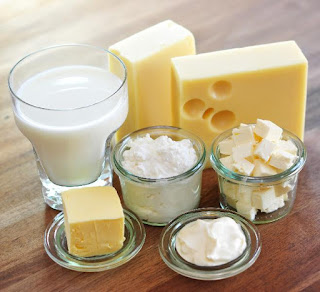What should you not microwave? What are possible negative effects of microwaving cooking?
MICROWAVE COOKING :
Electromagnetics waves from a power source magnetron are absorbed by the food and food becomes hot at once. Thus, microwaves do not require any medium of transfer of heat in cooking. The microwaves can be observed, transmitted or reflected. They are reflected by metals and absorbed by food. When food is kept in the cavity of the microwave oven for cooking The microwaves generated by the magnetron strike the food and the metal walls of the oven.
Cooking with microwaves differs radically from conventional cooking methods because the heat is generated inside the food rather than being transferred to the exterior of the food by conduction, convection or radiation.
The energy of these electromagnetic radiations exide the water molecule in food which bear a positive electrical charge in one position and negative charge in other position of the molecule (dipole). When the electric field of the microwave interacts with the water dipole, the water molecules being to vibrate very rapidly in food, 2,450 million times a second.
The efficiency of microwave cookery depends heavily upon the constitution of the food being cooked. Different components of the food will interact with the microwave radiation at varying rates.
The most important material in any food is water. It is the major constituent of the cellular material and many foods contain over 70% of their normal weight as water.
Microwave cooking can be done on paper dishes, plastics, glass, chinaware and ceramics because these materials transmit the waves through them without observer them like water. Aluminium foil can also be used. But brown paper bags, stainless steel vessels, metal twist ties, conventional thermometer cannot be used.
After cooking in microwave oven washing dishes is much easier as food does not stick to the sides of these vessels and the paper dishes can be thrown away. Cleaning the oven involves only wiping it dry with damp cloth.
Microwave cooking enhances the flavour of food because it cooks quickly with little or no water and thus preserve the the natural colour of vegetables and fruits.
Do Microwaves Cause Cancer?
In the United States, 97% of households have a microwave. But what misconceptions about our microwave use persist? Let’s take a look at 4 microwave myths that science has proven false.
In 1946, an engineer was working near a piece of equipment known as a magnetron which is part of a radar system when he noticed that the radar emission at microwave frequencies melted the snack bar he had stashed in his pocket. Legends disagree as to whether it was a peanut cluster bar or a chocolate one, but the fact remains that rather than just mourning the loss of his snack, he did a little investigating.
He and his coworkers realized that focused beams of microwave emission—that’s waves of energy at frequencies near the radio frequency regime—will cause polar or electrically asymmetric molecules like water in food to rotate. This rotation produces thermal energy (aka heat) which then can quickly and nearly uniformly heat the food.
The microwave was born and dinnertime around the world saw a revolution. The first thing those engineers tried to cook was popcorn. The second thing was an egg which, of course, exploded in their faces.
Now, according to the US Census Bureau, 97% of households in the United States have a microwave. But how much does the average household understand how a microwave works? What misconceptions about our microwave use persist? Let’s take a look at four microwave myths that science has proven false.
PRACTICAL HINTS IN USING MICROWAVE OVEN
• Do not use the oven for home canning or the heating of any closed jar. Pressure will build up and the jar may explode.
• Small quantities of food or foods with low moisture content can dry out, burn or catch on fire.
• Do not dry meats, herbs, Fruits and vegetables in the oven.
• Do not attempt to deep fry in microwave oven. Cooking oils may burst into flames.
• Do not heat eggs in their shell in microwave oven. Pressure will build up an the eggs will explode.
• If the food is wrapped, the wrapper should be perforated or otherwise allow for steam to escape to prevent it from bursting.
ADVANTAGES :
• Microwave oven cooks mini foods in about ¼th of time necessary on a gas burner. There is no wastage of energy.
• It saves time in heating frozen foods. Thawing can be done in minutes or seconds.
• Only the food is heated during cooking. The oven or the utensils does not get heated except under prolonged heating periods.
• Flavour and texture do not change when reheated in a microwave oven.
• Loss of nutrients is minimised.
• After cooking in microwave oven washing dishes is much easier as food does not stick to the sides of the vessels.
• Food gets cooked uniformly.
• Preserves the natural colour of vegetables and fruits.
• No fat or low fat cooking can be made.
DISADVANTAGES :
• Due to short period of cooking, full does not become brown unless the microwave has a browning unit.
• It is not possible to make chapati tandoori roti in it. It cannot cook soft or hard boiled eggs. Deep frying necessary for Puris, jalebis, pakoda, vadas cannot be done in it.
• Only 'microwave safe' utensils should be used.
• The short cooking time may not give a chance of blending of flavours as in conventional methods.
• The operator should be careful in operating the microwave oven since any exposuer to microwave oven causes physiological abnormalities.







Comments
Post a Comment
Please do not enter any spam link in the comment box.